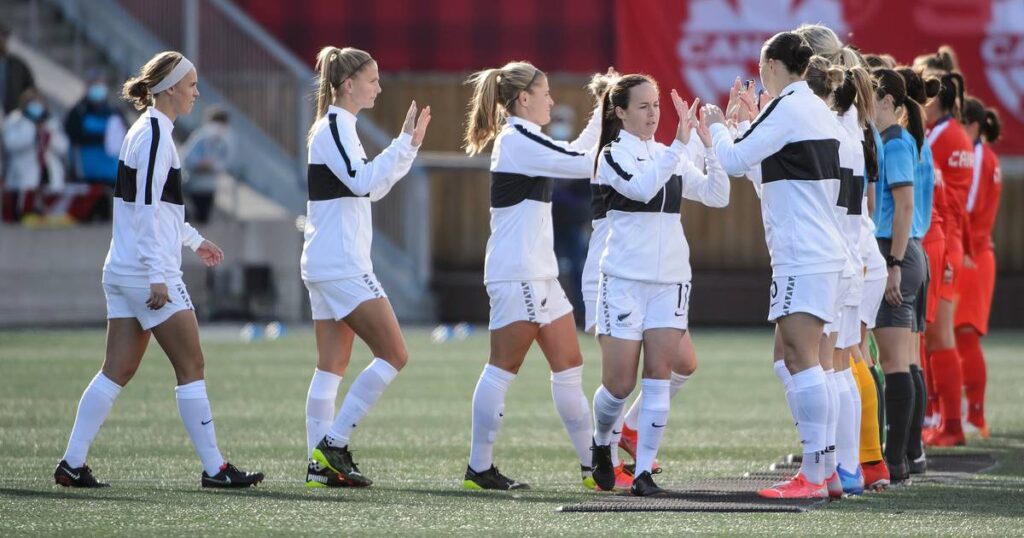Women’s football is seeing growing revenues globally from sponsorships, broadcast deals and merchandising, while also seeing greater interest from fans, according to a new survey by the game’s governing body.
This morning, FIFA released its second benchmarking report on women’s football as the sport picks up steam in advance of the Women’s World Cup in Australia and New Zealand next summer.
Building on the initial benchmarking report released last year, the group polled 294 teams and 30 of the main leagues.
The most recent study discovered growth across the board from matchday, broadcast, commercial, and prize money sources, although COVID-19 had an influence on club revenue in the previous report. Clubs reported a 33% increase in commercial revenue year over year, showing increased sponsorship interest. A title sponsor was reported to be present in 77% of leagues, up from 11% in 2021.
Revenue from broadcasting increased 22% from the previous year. In contrast to the previous survey’s nine leagues, ten leagues reported broadcast revenue.
There is, however, room for improvement. Only 7% of teams worldwide reported earning more than $1 million in match, broadcast, commercial, and prize money, according to the survey.
“The changes are obvious in the second edition of the study,” said Sarai Bareman, FIFA’s top women’s football officer, “underscoring women’s soccer is a prudent investment.
We sense it, we know it, and “She said. “And for me, it’s simply a matter of making those who are active, especially at the top levels of our game around the globe, aware of the potential that is right in front of them. The things that appeal to those folks frequently are facts and data. It’s no longer anecdotal. It’s written down here.
Unprecedented interest in the sport has accompanied the structural growth of women’s soccer.
At Wembley, a friendly between the United States and England drew close to 78,000 spectators and sold out in less than a day.
50,000 spectators saw the recent Women’s Africa Cup of Nations final between South Africa and Morocco, and 91,000 people attended a UEFA Champions League quarterfinal game at Camp Nou.
“Woman’s football is developing at a rate unmatched by any other sport in the world.
It’s the biggest possibility for growth that not just FIFA as an organisation but also our sport, football, has today. There is no greater potential for advancement than this. And the evidence of that expansion may be seen quite recently, according to Bareman.
With an increased field of 32 teams, up from 24 at the previous two tournaments, the 2018 Women’s World Cup symbolises the rise in the sport.
This has made it possible for new participants from countries including Morocco, the Philippines, Ireland, Vietnam, and Zambia.
FIFA’s poll, however, also comes at a challenging time for the sport. A recent investigation in the United States revealed widespread abuse and misconduct in the National Women’s Soccer League, the top professional division of the sport in the nation.
US Soccer ordered the probe after North Carolina Courage coach Paul Riley was fired last year after two former players accused him of sexual harassment and coercion in a story published in The Athletic last fall. Last season, five of the league’s ten coaches were either let go or resigned due to misconduct.
The FIFA safeguarding programme was used this summer in Costa Rica at the under-20 Women’s World Cup.
The initiative aims to protect participants and supporters from mistreatment, exploitation, and harassment.
A safety officer and a representative from Costa Rica’s National Children’s Institute worked the 32 games of the tournament. Abuse was explained to the participants, along with reporting procedures.
The FIFA Guardians initiative, which was unveiled after the 2019 Women’s World Cup to guarantee player safety, includes the protection programme.
It was developed with UNICEF, the United Nations children’s agency.
It will be in place for the senior World Cup in the coming summer.
In advance of the World Cup, a FIFA report reveals growth in the women’s game.

